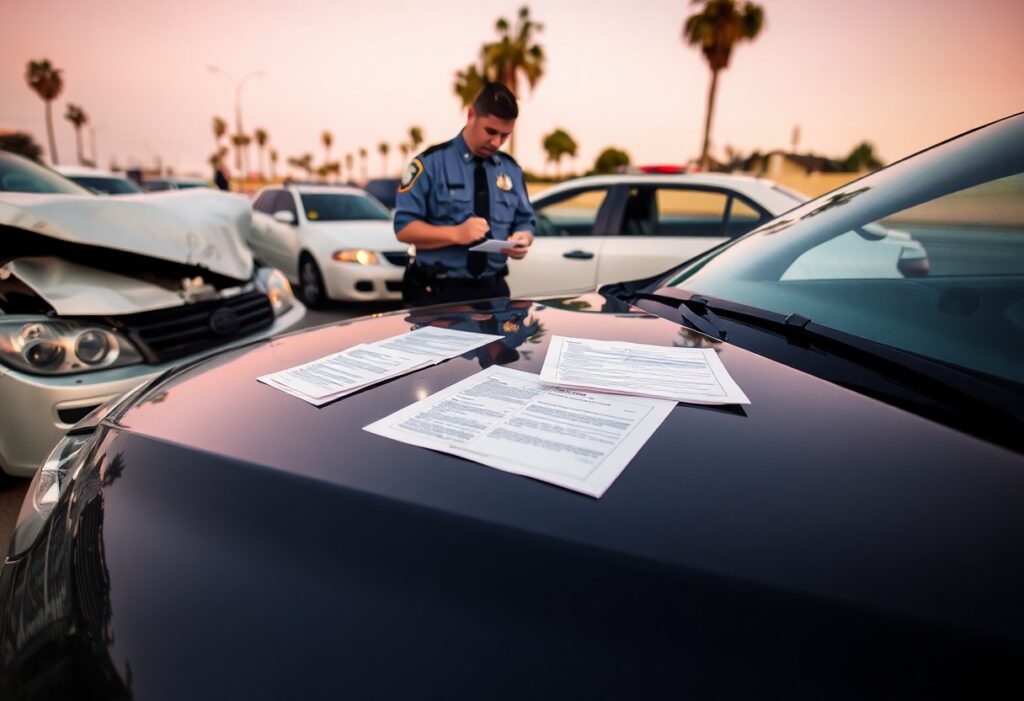When involved in a car accident in California, your ability to prove fault is crucial to securing fair compensation for your damages. As you navigate the legal process, it’s crucial to understand the complex laws and regulations that govern car accident cases in the state. You will need to gather evidence, including police reports, witness statements, and medical records, to build a strong case and demonstrate the other party’s liability. By following the right steps, you can increase your chances of a successful outcome.
Understanding California Car Accident Laws
Before plunging into the process of proving fault in a California car accident case, it is imperative to have a solid understanding of the state’s laws and regulations. You will need to familiarize yourself with the specific rules and procedures that apply to your situation, including statutes of limitations and evidence requirements.
Overview of California’s Fault System
Clearly, California operates under a comparative fault system, where the degree of fault is allocated among parties involved in the accident. You should understand how this system works to determine your potential compensation and liability.
Importance of Legal Expertise in Proving Fault
Fault can be a complex issue in car accident cases, and you will likely need professional guidance to navigate the process. You should consider consulting with a qualified attorney who has experience in California car accident law to help you build a strong case and maximize your recovery.
Systematically, you will need to gather and present evidence to support your claim, including police reports, witness statements, and medical records. As you work to prove fault, you will need to demonstrate how the other party’s negligence or recklessness contributed to the accident, and how their actions have impacted your life, including any physical or emotional harm you have suffered, and any financial losses you have incurred, such as medical expenses or lost wages. By working with a skilled attorney, you can ensure that your rights are protected and that you receive the compensation you deserve.
Gathering Evidence to Prove Fault
While gathering evidence is a vital step in proving fault, it can be a challenging task. You need to collect relevant information to support your claim, including police reports, witness statements, and photographic evidence.
Tips for Collecting Evidence at the Accident Scene
Now that you are at the scene, you should start collecting evidence. You can do this by:
- Taking photos of the accident scene
- Gathering witness statements
- Collecting vehicle information
Recognizing the importance of preserving evidence will help you build a strong case.
Factors to Consider When Documenting the Accident
Collecting evidence requires attention to detail. You should consider the following factors:
- Weather conditions
- Road conditions
- Vehicle damage
Recognizing the significance of these factors will help you document the accident accurately.
The process of documenting the accident involves several steps. You should:
- Take clear photos of the scene
- Collect contact information from witnesses
- Make a detailed report of the accident
Recognizing the value of thorough documentation will help you prove fault and support your claim, and increase your chances of receiving fair compensation for your injuries and damages.
How-to Guide to Proving Liability
You will need to gather evidence and build a strong case to prove fault in a California car accident. This involves understanding the state’s laws and regulations, as well as the specific circumstances of your accident.
Identifying Liable Parties in a Car Accident
Liability, parties involved in the accident may include drivers, passengers, pedestrians, or even vehicle manufacturers. You must identify all potential parties to ensure you are seeking compensation from the right sources.
Strategies for Establishing Negligence
On the scene, it is imperative to collect as much evidence as possible, including photos, witness statements, and police reports. You will use this evidence to establish negligence and prove the other party’s fault.
With a thorough understanding of the accident and the applicable laws, you can develop a solid strategy for establishing negligence. You will need to prove that the other party breached their duty of care, causing the accident and resulting in your physical and financial harm. By presenting a clear and compelling case, you can increase your chances of securing fair compensation for your losses.
Key Factors in Determining Fault
Unlike other states, California has specific laws that determine fault in a car accident. You should consider the following factors:
- Speed
- Right-of-way
. Assume that understanding these factors will help you build a strong case.
Role of Police Reports and Witness Statements
There’s no denying that police reports and witness statements play a significant role in determining fault. You can use these to support your claim and establish the other party’s liability.
Impact of Traffic Laws and Regulations
Impact of traffic laws on your case can be significant. You must understand how traffic laws and regulations apply to your situation to prove fault.
Statements from experts and witnesses can help you understand the impact of traffic laws and regulations on your case. You should be aware of the consequences of reckless driving and how it can affect your claim. By understanding these laws, you can build a strong case and increase your chances of success.
Effective Use of Expert Testimony
To prove fault in a California car accident case, you will likely need to rely on expert testimony. This can include testimony from accident reconstruction experts, medical professionals, and other specialists who can help establish the cause of the accident and the extent of your injuries.
How to Work with Accident Reconstruction Experts
With the right expertise, you can build a strong case. Working with accident reconstruction experts, you can recreate the accident scene and demonstrate how the other party’s negligence led to the collision, highlighting key factors that contributed to the accident.
Tips for Presenting Expert Testimony in Court
With thorough preparation, you can effectively present expert testimony in court. Consider the following tips:
- Establishing credibility
- Presenting clear and concise testimony
Perceiving the strengths and weaknesses of your case, you can make informed decisions about how to proceed.
Experts in the field of accident reconstruction can provide valuable insights into the cause of the accident, and medical professionals can testify about the severity of your injuries. When presenting expert testimony in court, consider the following tips:
- Using visual aids to illustrate complex concepts
- Anticipating challenging questions from the opposing side
Perceiving the potential outcomes of your case, you can make strategic decisions about how to proceed, and maximize your chances of a successful outcome.
Navigating the Claims Process
All parties involved in a car accident in California should understand the claims process to ensure a smooth and fair resolution. You will need to gather evidence, including police reports and medical records, to support your claim.
How-to Guide to Filing a Car Accident Claim
Likewise, little mistakes can lead to delays or even claim denial, so it’s necessary to follow the correct procedures when filing a car accident claim. You should contact your insurance company and provide them with all the necessary documents and information.
Factors to Consider When Negotiating a Settlement
Yours is the decision to accept or reject a settlement offer, considering factors such as medical expenses, lost wages, and property damage. You should:
- Calculate your total damages
- Evaluate the insurance company’s offer
- Consider future expenses
Any settlement offer should be carefully evaluated to ensure it covers all your losses.
Negotiating a settlement can be a complex process, and you should consider factors such as comparative fault, insurance policy limits, and case valuation. You should:
- Understand the claims process
- Gather evidence to support your claim
- Be prepared to negotiate with the insurance company
Any successful negotiation will depend on your ability to effectively advocate for your rights and interests.
Summing up
Now that you have understood the basics of proving fault in a California car accident case, you can navigate your claim with confidence. You will need to gather evidence, assess damages, and possibly consult with a legal expert to build a strong case. By following these steps, you can effectively establish your claim and secure the compensation you deserve for your losses, ensuring your rights are protected throughout the process, and you achieve a favorable outcome for your specific situation.










